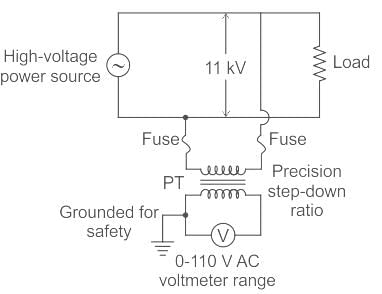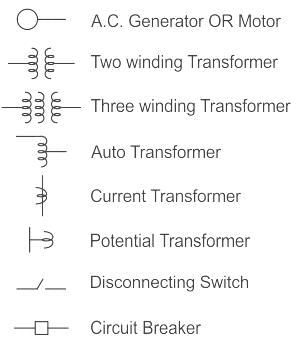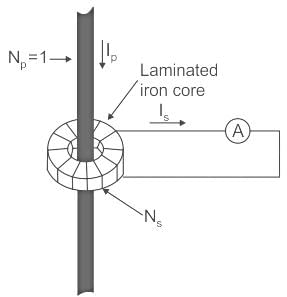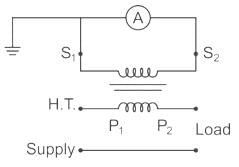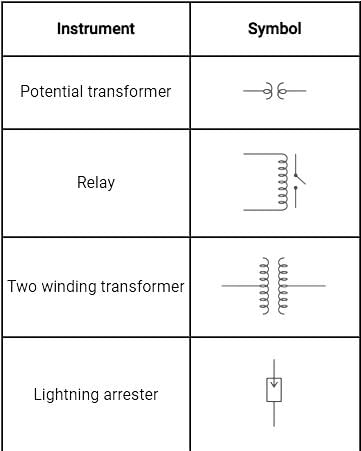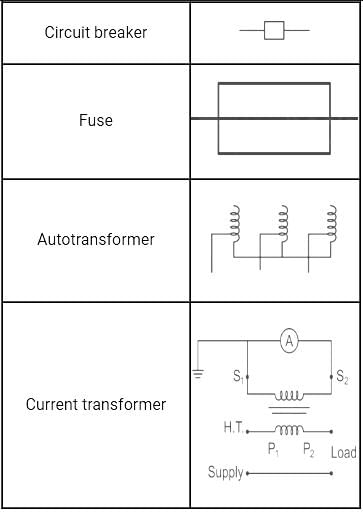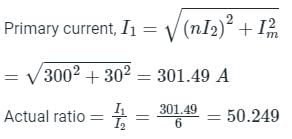Test: Instrument Transformer - 2 - Electrical Engineering (EE) MCQ
10 Questions MCQ Test - Test: Instrument Transformer - 2
The primary winding of a current transformer is connected in _________ with the line carrying the main current and the secondary winding is directly connected across ___________.
Up to a voltage of __________, Potential Transformers (PTs) are usually of dry type.
The below symbol which is used in single line diagrams represents ________


The ratio error in current transformer is attributed to:
A current carrying conductor is wrapped eight times around the jaw of a clamp-on meter that reads 50 A. What will be the actual value of the conductor current?
The primary of a _______ should never be energised when its secondary is open circuited.
A current transformer has double turn primary and a 100 turn secondary winding. The secondary draws current of 6 A and magnetising ampere-turns is 60 A. What is actual transformation ratio?
Under operating conditions, the secondary of a current transformer is always short-circuited because of ________.



